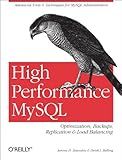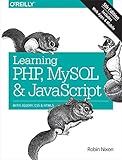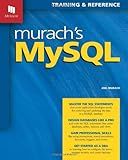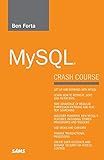Best Tools for MySQL Management to Buy in October 2025

High Performance MySQL: Optimization, Backups, Replication, Load Balancing & More (Advanced Tools and Techniques for MySQL Administrators)



Learning PHP, MySQL & JavaScript: With jQuery, CSS & HTML5 (Learning PHP, MYSQL, Javascript, CSS & HTML5)



Head First PHP & MySQL: A Brain-Friendly Guide



Murach's MySQL
- MASTER ESSENTIAL SQL STATEMENTS FOR MYSQL WITH EASE.
- STEP-BY-STEP GUIDANCE FOR BEGINNER TO ADVANCED CODERS.
- PRACTICAL EXAMPLES FOR REAL-WORLD DATABASE APPLICATIONS.



Linux Server Hacks: 100 Industrial-Strength Tips and Tools
- AFFORDABLE PRICES FOR QUALITY USED BOOKS, SAVING YOU MONEY!
- THOROUGHLY INSPECTED FOR GOOD CONDITION, GUARANTEED SATISFACTION!
- ECO-FRIENDLY CHOICE: REDUCE WASTE BY REUSING PRE-LOVED BOOKS!



Build a real Search Engine: Engineering tools: HTML, CSS, JavaScript, PHP, MySQL



MySQL Crash Course


To disable MySQL query caching, you need to edit the MySQL configuration file. Open the my.cnf file and locate the query_cache_type variable. Change its value to 0 or comment it out to disable query caching. Save the file and then restart the MySQL server for the changes to take effect. Disabling query caching can help improve overall performance in certain situations.
How to monitor query cache usage in MySQL?
One way to monitor query cache usage in MySQL is to use the SHOW STATUS command. This command provides information about various server status variables, including those related to query cache usage.
To monitor query cache usage, you can use the following command:
SHOW STATUS LIKE 'Qcache%';
This command will show you information about various query cache-related status variables, such as the number of queries added to the cache, the number of queries retrieved from the cache, and the hit ratio (i.e., the ratio of queries retrieved from the cache to total queries).
You can also monitor query cache usage using the MySQL Performance Schema. By enabling the Performance Schema and configuring the appropriate instrumentation, you can track query cache-related metrics over time and analyze query cache usage patterns.
In addition, you can use monitoring tools such as MySQL Enterprise Monitor, Percona Monitoring and Management, and other third-party monitoring solutions to monitor query cache usage and performance metrics in real-time. These tools provide comprehensive monitoring capabilities and visualization features to help you track and analyze query cache usage effectively.
How to disable query caching for a specific database in MySQL?
To disable query caching for a specific database in MySQL, you can use the following steps:
- Log in to your MySQL server using a client like MySQL Workbench or the command-line interface.
- Use the following command to switch to the database for which you want to disable query caching:
USE database_name;
- Run the following query to disable query caching for the specific database:
SET GLOBAL query_cache_size = 0;
- You can also set the query cache type to 0 to completely disable query caching for the current MySQL session:
SET SESSION query_cache_type = 0;
- Verify that query caching has been disabled by checking the status of the query cache using the following command:
SHOW VARIABLES LIKE 'query_cache_size';
This should disable query caching for the specific database in MySQL. Remember to adjust the configuration settings accordingly if you want to enable query caching again in the future.
How to disable query caching for a specific query in MySQL?
To disable query caching for a specific query in MySQL, you can use the SQL_NO_CACHE hint in your query. This hint tells MySQL not to cache the result of the query.
Here is an example of how to use SQL_NO_CACHE in a query:
SELECT SQL_NO_CACHE * FROM your_table WHERE your_condition;
By adding SQL_NO_CACHE before the columns in your SELECT statement, you can prevent MySQL from caching the results of that specific query.
What is the query_cache_type parameter in MySQL?
The query_cache_type parameter in MySQL determines the type of caching mechanism used for query caching. This parameter can have three possible values:
- 0 or OFF: Query caching is disabled
- 1 or ON: Query caching is enabled for SELECT statements, but not for INSERT, UPDATE, DELETE, or similar statements
- 2 or DEMAND: Query caching is enabled only for SELECT statements that are explicitly requested to be cached using the SQL_CACHE hint.
What is the maximum size of query cache in MySQL?
The maximum size of the query cache in MySQL is determined by the query_cache_size system variable, which can be set to a maximum value of 4 GB on a 32-bit system or 16 GB on a 64-bit system.
